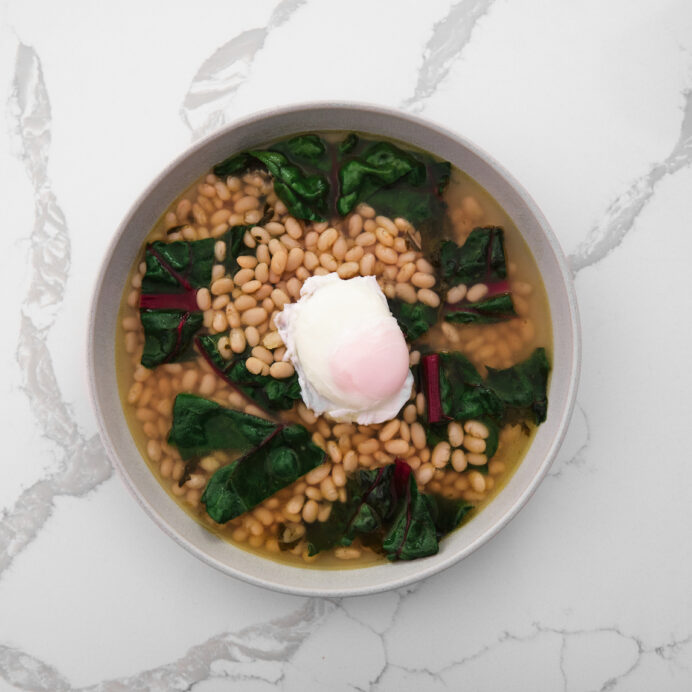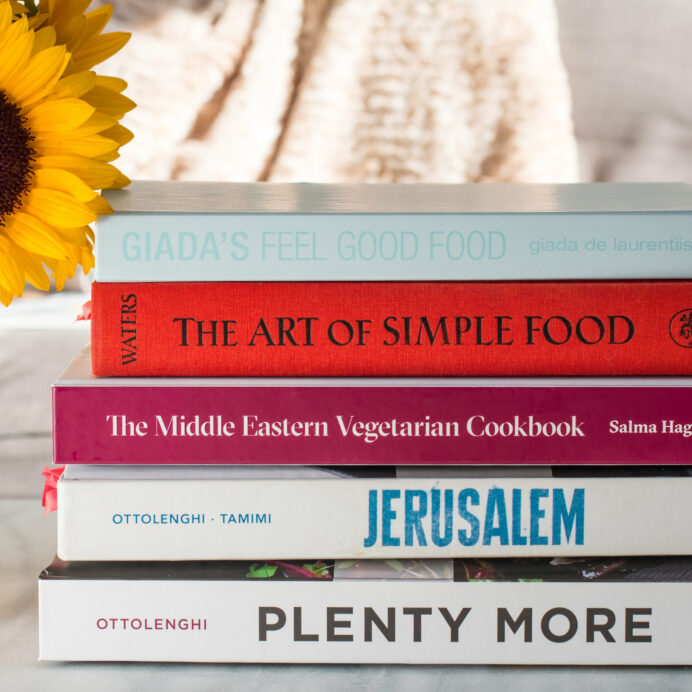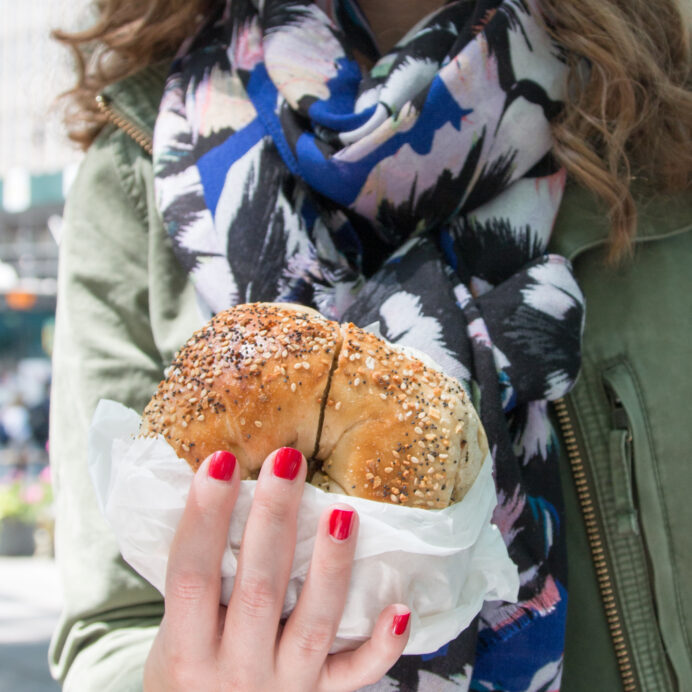There’s a prevailing theory that we need to know much more than we do in order to feed ourselves well. It isn’t true.
Tamar Adler said that. And it’s true, I’m discovering. We signed up for a weekly produce delivery toward the end of my third trimester, as part of our solution to eating well postpartum. Yes, I felt intimidated and unsure if I could commit to preparing fresh ingredients from scratch week after week. But I also knew that I didn’t want to give up on cooking, and that the demands of caring for a new baby, the breastfeeding, the sleep loss, would mean that I needed to feel nourished, grounded, creative—all the gifts that cooking gives me.
I should mention: my first attempt at cooking from a weekly produce box failed. I’d just moved to San Fransisco with Adam. We were negotiating our shared kitchen, figuring out how to share our meals. Summer went well enough. A hundred variations of stone fruit and tomato salad seemed to sustain us for the entire season. Meal ideas felt intuitive, obvious. But Fall produce, with its tough exteriors, doesn’t reveal itself as easily. Week after week, we found ourselves with an abundance of root vegetables and cabbage-y greens and a shortage of ideas. We cancelled, defeated.
Here’s what we didn’t realize the first time: it’s all about preparation and flexibility. Experience plays a smaller role than you might think. A quick cookbook flip-through or Google search helps to fill lapses in creativity, and you can basically put yourself through amateur culinary school on YouTube. But those precious couple of hours to wash, chop, roast, and otherwise remove as many barriers as possible to using everything in that box throughout the week? Those are non-negotiable.
Each week I buy whole bunches of the leafiest, stemmiest vegetables I can find. Then I scrub off their dirt, trim off their leaves, cut off their stems, peel what needs peeling, and cook them all at once.
Tamar Adler’s wisdom works here, too. I do a version of what she describes, reserving about forty to ninety minutes the morning we get our produce box to prep as much as I can. I used to think this kind of work would take an entire afternoon, but I’m always surprised by what I can accomplish in just thirty minutes even. Practice makes everything quicker, of course. That and a good formula, which I have pretty down after doing this for a few months. So I will walk you through what I do in hopes that it might help you wrap your head around subscribing to a CSA or to jump back on that bandwagon if you too have one of those failed attempts in your past.
Make a rough plan
Every Saturday, our CSA delivery service emails us a list of the fruit and veg we’ll receive in our box the following week. That’s when I start brainstorming how we’ll use everything. I’m learning to be more realistic about what’s possible. For instance, I limit complex recipes and/or experiments to one per week. Everything else has to be simple and straightforward if it’s going to get done. That means I either know the recipe like the back of my hand and can throw it together quickly or it’s so simple there’s no recipe involved at all.
Then I do a quick fridge/freezer/pantry check to make sure we’re stocked on any other groceries (dried/canned goods, spices, etc.) we might need for everything to come together. For any missing items, I put in an Instacart order (more on the way we grocery shop here). The first step to making sure we eat and cook at home is having everything we need to make it happen.
Greens first
As a general rule, the green things (lettuces, other leafy greens, herbs) go first. Even kale, with its tough, waxy exterior, tends to droop after sitting in the fridge unattended for more than a half day. So I prep the greens immediately, right when we get the box into the house. I get out a colander and a cutting board and then do as many rounds of chopping, washing, drying, and storing as I need to get them all ready to use in salads, omelettes, pastas, or whatever else the plan may be.
Key to this plan is making sure everything dries properly to avoid eventual sogginess. And by “properly,” I mean about eighty percent because it just never seems to get any drier than that no matter what I try. The other key is to make sure you have a proper storage solution. Zip lock bags work well, and so do their earth-friendlier counterparts. If I follow these rules, the tougher greens like kale and collards last up to six days and the more delicate ones like mesclun and spinach last between three and four days.
Boil water and/or set the oven to 350
Have you tried this? Preemptively boiling a pot of water and heating your oven, maybe taking out a few sheet trays? I find it to be immensely empowering because you can cook all the things if you so desire. I do this right when I drag my produce box in the door in the morning, so both cooking methods are ready to go once I’ve washed, dried, and appropriately chopped what I need to cook.
If I have a specific plan for certain vegetables that will take more time, I maybe stop at the wash/dry/chop stage and put them in the fridge to finish later. I do this more often in summer, foregoing the hot oven and prepping most things to go on the grill later in the day. But, if a simple preparation will do, I can fully cook almost everything on the spot. Beets, for instance, can be covered in foil and roasted whole. Once they’re done, I wait for them to cool, remove their skins, and cube them to use in a salad later. I’ve yet to meet a Fall squash that can’t be halved and seeded, doused in oil, and roasted on a sheet tray, each half wrapped in foil (yes, even butternut). Anything root or cabbage-like, can also be halved, oiled, and roasted (carrots, parsnips, brussels sprouts, radishes). Some come out more tender if you blanche, then roast (cauliflower, broccoli).
So there you have it: the rough method I use to make sure we use every last thing in that box. I do this every Tuesday morning, when we get our delivery. If you can’t spare the prep time on a Tuesday morning (which I realize most people probably can’t), what delivery day would work well for you? Make that a factor in the CSA you choose. The more you can front-load the work, the better set up for success you are throughout the week. And know that, when I say this system is completely functional for us, that I apply an 80/20 rule to just about everything in my life. Some weeks will be off-weeks and that’s okay, too. No system is ever perfect and life happens.
Good luck and let me know how it goes! Or, do you have a different system?




